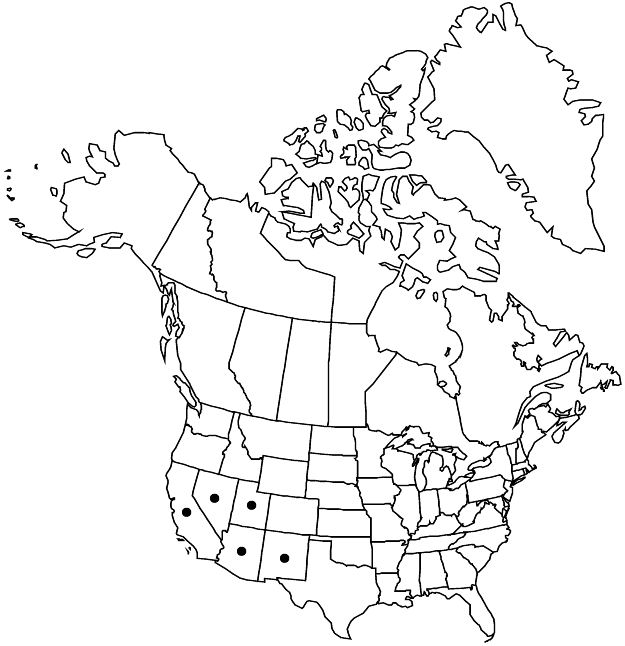Garrya flavescens
Amer. Naturalist 7: 301. 1873.
Shrubs 1.5–3 (–6) m, branchlets strigose-sericeous, glabrescent. Leaves: blade whitish abaxially (because of white epidermis), yellow-green to gray-green adaxially, flat to concave-convex, elliptic to obovate-elliptic to oval, (2–) 3–8 × 1–4.5 cm, length 1.3–3.3 times width, margins flat to undulate, smooth, apex obtuse to rounded, abaxial surface sparsely to densely strigose-sericeous, hairs antrorsely appressed, adaxial surface dull, sparsely strigose to glabrate. Aments: staminate 3–8 cm; pistillate compact, internodes to 1 mm, unbranched, pendulous, 2–5 cm; pistillate bracts connate proximally into deep cup, at least at proximal nodes each subtending 3 flowers, broadly ovate-deltate with acuminate-recurved apices, differing in size and shape from leaves, densely strigose-sericeous. Berries 5–8 mm diam., densely strigose-sericeous, sometimes glabrate toward base, not glaucous.
Phenology: Flowering Feb–Apr.
Habitat: Desert slopes, chaparral, pinyon-juniper woodlands, pine-oak woodlands.
Elevation: 400–2800 m.
Distribution

Ariz., Calif., Nev., N.Mex., Utah, Mexico (Baja California)
Discussion
The white abaxial leaf epidermis is distinctive of Garrya flavescens. Hairs on the abaxial leaf surfaces vary in length and density but all are relatively straight and parallel. Plants with slightly wavy hairs, said to be diagnostic for G. congdonii, occur in the western portion of the range (most often on serpentine but not restricted to it); intergrades are numerous and recognition of G. congdonii even at varietal rank appears to be subjective. Subspecies congdonii and subsp. pallida (the types of both taxa from California) together as a single evolutionary unit might be treated at subspecific rank and distinct from subsp. flavescens (the type from Arizona), but intergrades make even this difficult.
Selected References
None.